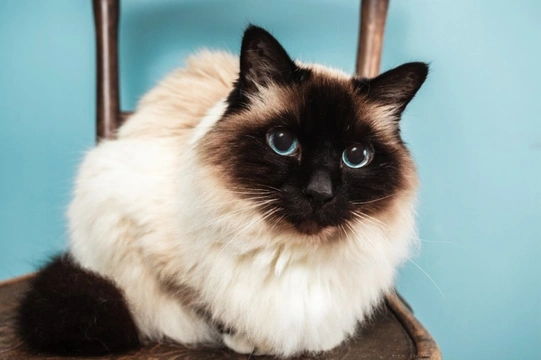
What Burmese cat owners need to know about feline orofacial pain syndrome
Feline orofacial pain syndrome is the name given to a painful health condition that causes discomfort and potential self-mutilation in affected cats, which vets and scientists don’t completely understand in terms of the condition’s causes and triggers.
Affected cats display a range of acute behavioral symptoms that indicate that they’re suffering from pain and discomfort around their mouth and head, which may include causing themselves physical injuries to their face and tongue by clawing and biting themselves.
This is understandably highly distressing for the cat’s owners as well as the cats affected, and is a particular risk for certain popular pedigree cat breeds.
In this article we’ll explain which cat breeds are most commonly affected by feline orofacial pain syndrome, how the condition presents itself, and what the prognosis is for cats affected by the condition. Read on to learn more.
What type of cats can be affected by feline orofacial pain syndrome?
Theoretically, any type of cat might present with the symptoms of feline orofacial pain syndrome, but the condition is most commonly diagnosed in the Burmese cat breed. Other breeds that are noted as being affected slightly more commonly are the Siamese, Tonkinese, domestic shorthair, and Burmilla.
How do cats get feline orofacial pain syndrome?
Feline orofacial pain syndrome is not fully understood by vets and researchers, and we’re not even totally sure as to what causes the pain and discomfort that results in the condition’s symptoms. This means that exactly how the condition is transmitted is less than clear either, but we do know that the condition is hereditary, which means that it is not contagious and does not pose a risk to other cats that an affected cat comes into contact with.
It is likely that feline orofacial pain syndrome is passed on from a parent cat to its young by means of autosomal recessive heredity, although even this isn’t certain. However, it does mean that the owners of a cat with feline orofacial pain syndrome, or a cat with close relatives with the condition, are cautioned against using said cat for breeding.
Are cats with feline orofacial pain syndrome in constant pain?
Feline orofacial pain syndrome is an episodic condition, which means that cats affected by it aren’t in pain continually, and may go for long periods of time without flare-ups. It also means that the cat in question might be well into adulthood before their first attack and so, diagnosis, although the first attack commonly accompanies teething.
What triggers bouts of feline orofacial pain syndrome in any given cat can be variable, but it is certainly indicated that stress plays a part in many cases, as many affected cats will undergo flare-ups at times such as fights with other neighbourhood cats, house moves, being placed in a cattery, and other situations that cats commonly find stressful or upsetting.
Additionally, any type of dental problems and particularly, periodontal disease is apt to trigger acute pain in affected cats, and so special care must be paid to their teeth and oral health.
What are the symptoms of feline orofacial pain syndrome?
In between flare-ups of the condition, cats with feline orofacial pain syndrome won’t display any symptoms, although scarring from previous flare-ups might be visible.
However, during flare-ups, affected cats may display symptoms such as any, some, or all of the following:
- Signs of facial discomfort, such as pawing at the face, excessive licking, or even clawing and scratching at the face to the point of causing physical injury.
- Discomfort of the tongue, which might display as the cat appearing to chew when nothing is in their mouth, and claw or bite at their tongue and lips.
- Most presentations of feline orofacial pain syndrome tend to be worse on one side of the face than the other, and so the cat may fixate on that one side accordingly.
- Movement of the tongue and mouth such as vocalisations, eating, drinking, and grooming will sometimes trigger flare-ups.
- Flare-ups can vary in duration from just a few minutes to several hours.
- Many cats display signs of anxiety or erratic behaviour immediately before they begin displaying symptomatic behaviours of a flare-up.
- Cats conditioned to pain responses due to the condition may be very reluctant to eat.
Can feline orofacial pain syndrome be treated, managed or cured?
There is no current cure for feline orofacial pain syndrome in cats, and so investigation of the potential underlying causes of the condition and mitigating them is generally the most effective approach to managing the condition, reducing the occurrence rate of flare-ups, and keeping affected cats comfortable.
This includes regular dental check-ups and taking excellent care of the cat’s teeth to prevent dental disease causing flare-ups, as well as doing everything possible to reduce stress and prevent upheaval in the life of the affected cat.
Cats that are injuring their faces during flare-ups may need to wear a buster collar to prevent this, and in extreme cases, painkillers and nerve blockers may be prescribed too.
Steroidal medications and antibiotics may be required to promote healing of mutilations too, and in extreme cases, surgery may be required to repair damage to the cat’s tongue.



